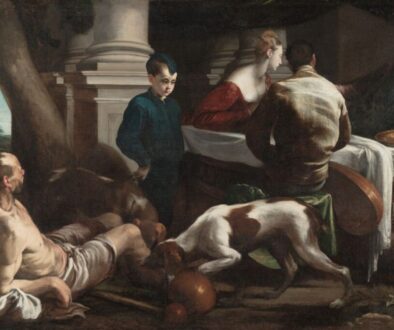What Was Life Like For A Medieval Nun?

Published July 25th, 2019
The life of medieval nuns has always been a fascination for most of us. It’s been so long ago that the line separating fact from fiction has blurred. But one undeniable fact is that medieval nuns helped shaped Catholicism to what it is today.
Fortunately, they’ve left behind a plethora of written records giving us a glimpse of what life was like for a medieval nun.
How Does Someone Become a Nun in the Middle Ages?
What many don’t know is that most of those who join the nunnery are from noble families. They were placed in the convents by their families. In exchange, the convent receives a dowry from their parents meant for the girl’s upkeep. Sometimes, they also receive pieces of jewelry and other valuable items that the girl owns. If the girl is from a family who ranks high up the nobility chain, the convent may also receive patronage.
If she enters the convent really young, she is called an “oblate”. In her mid-teens, she can become a “novice” or a trainee nun. After a year or so, they take simple vows to become a nun. When she joins the nunnery as a grown woman, she starts out as a novice.
Another solemn vow is then taken four years later to signify her lifetime commitment as a nun. This time, her vows will be taken in a consecration ceremony that’s very much similar to a medieval wedding. She wears a headdress and a ring is then placed in her finger as a symbol of her marriage to God.
Religious Orders
The first medieval religious order to accept nuns were the Benedictines. The order was founded by St. Benedict in 529AD. From there many other orders of medieval nuns were established. Among them are:
- Dominican
- Franciscan
- Ursuline
- Augustinians including the Gilbertines
- Carmelite
- Daughters/Sisters of Charity
- Daughters of St. Paul
- Sisters of Mercy
- Sisters of St. Joseph
Most of these orders enforce strict disciplinary measures for the nuns. Their way of life is largely dictated by the vows of the order they belong to. These vows usually include vows of poverty, chastity, and obedience.
(Related: What Does It Mean To Be a Submissive Wife?)

What Did Nuns Do In The Middle Ages?
A medieval nun’s daily life is generally austere, particularly for the Cistercians. Days start early before the sun is up. They follow a strict prayer schedule from morning till before they sleep in the evening.
Matins Laud, the first service of the day, usually starts at 2:00 in the morning. Afterward, the nuns go back to bed and get up again at first light to wash and eat their breakfast.
At around seven in the morning, Prime (the second service of the day) starts. They would then meet to read the bible or read the writings of saints. This would be followed by Tierce, the third service of the day. After this, they occupy themselves with various works within the convent. It can range from tilling the fields, cooking in the kitchen, cleaning the washroom or making things in the workshops. Some monastic orders also provide educational and medical services to their community.
At midday, they pause for lunch and another service (the fourth of the day). Vespers, the fifth service, starts just before supper. After dinner, they attend the last service of the day called “Compline” before going to bed.
They live in convents and nunneries which in itself is a community of sorts. It has its own barns, bakeries, laundries, workshops, and storerooms. Large nunneries also have libraries, schools, hospitals and even guesthouses. The buildings are usually surrounded by high walls and ditches to protect it against attacks.
Clothing
Because of their poverty vows, medieval nuns are expected to wear simple clothing. Long tunics are typically paired with a veil to cover their whole body save for the face. It symbolizes their role as a “bride of Christ”. Even though the veil covers their hair, most orders require nuns to cut their hair short. Many medieval nuns also wear a crucifix on top of their tunics.
What Do Medieval Nuns Eat?
Breakfast for nuns in the middle ages usually consists of beer and bread. In those times, most monasteries were already aware of the dangers of drinking groundwater. Thus, beer was widely preferred.
Most monastic orders have vows of poverty so nuns cannot indulge in luxurious foods. Usual fare for them involves soup and stews made of vegetables picked from their garden. Commonly grown vegetables are turnips, parsnips, legumes, onions, leeks, and mint among others. They also plant and harvest varieties of nuts and fruits which they turn into wines.
How Did Medieval Nuns Support Themselves?
Medieval convents and nunneries function as a community in itself. Its high walls and amenities like libraries, gardens and such are designed so nuns don’t have to go outside. Since medieval nuns provide services to their communities, they often receive donations in kind. Patronage from rich and noble families also allowed many nunneries to acquire land and other properties.
What Makes Women Choose To Become a Nun?
We all know that women in the middle ages don’t have the same rights as men. Nor do they command respect unless they are from the nobility. This is why many medieval women chose to live in a nunnery. A nun’s vow of chastity allowed them to command a modicum of respect from society.
A lot of parents also chose to send their daughters to nunneries in the hopes of a better life for them. Nunneries in those times are the only places where a girl can receive an education – the best there is. They learn to read, write and count among many other things.
Many noblewomen were also sent to nunneries either for the reasons cited above or for bringing disgrace to the family. A lot of royal princesses in the middle ages (either for political or religious reasons) were also sent to live with nuns even at a very young age.
Although the medieval age ended hundreds of years ago, many monastic orders managed to retain most of their practices. One of them is the Cistercians who continued a tradition of living a simple and self-sustaining way of life based on the Rule of St. Benedict – a lifestyle which we, the Lay Cistercians, have modeled our life in.
Seek a Deeper Connection with God and Join Lay Cistercians of South Florida
Lay Cistercians of South Florida, is a community of lay people who seeks to have a deeper connection with God by living a life inspired by the monks and nuns through Lay Monasticism. Learn more about what is a Lay Cistercian on our website. Anyone who aspires to do the same as us, and is a confirmed Catholic is welcome to join us! We meet every second Saturday of the month at Emmanuel Catholic Church in Delray Beach, Florida.

This Content Has Been Reviewed For Accuracy
This content has undergone comprehensive fact-checking by our dedicated team of experts. Discover additional information about the rigorous editorial standards we adhere to on our website.

About The Author
Judy Ponio is a professional writer for the Lay Cistercians blog and a devoted Catholic. She works hard to ensure her work uses accurate facts by cross checking reputable sources.




